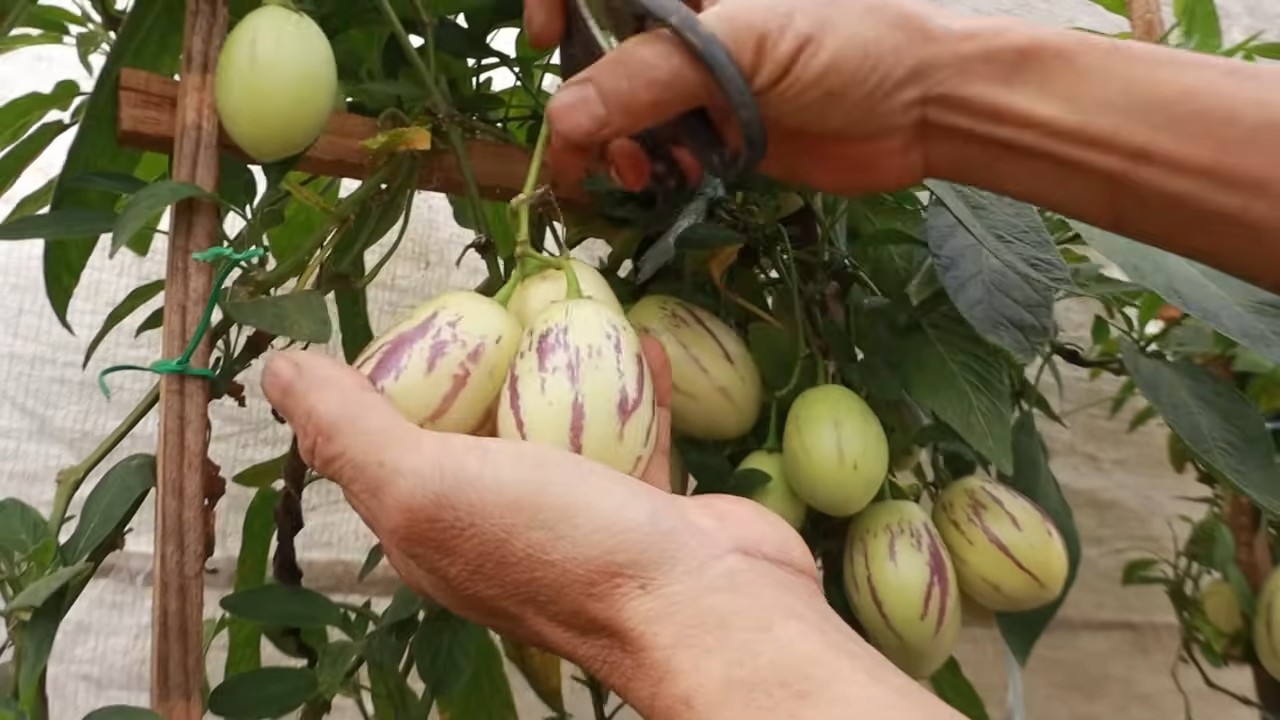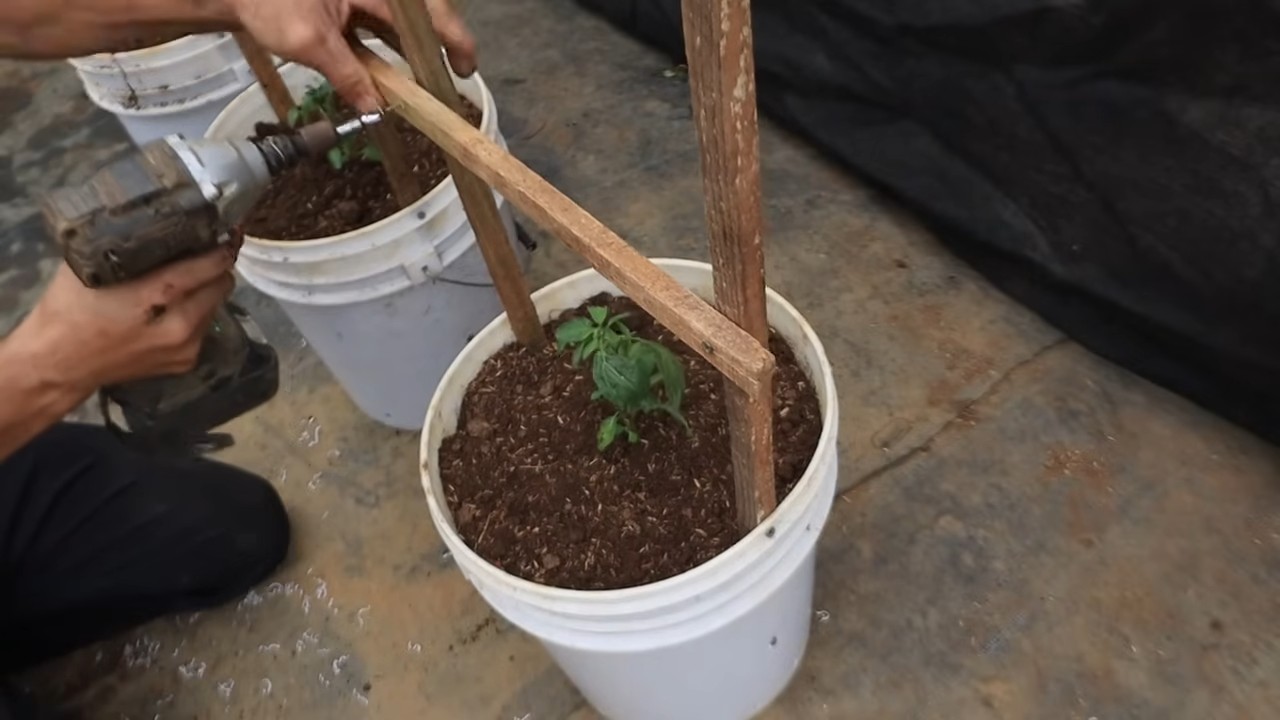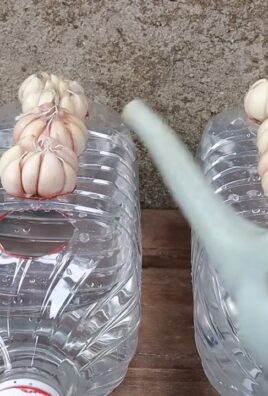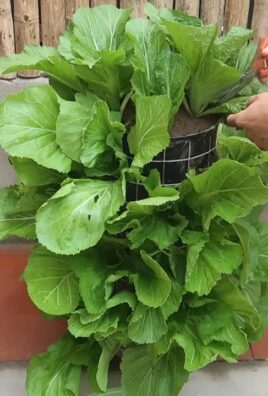Grow Pepino Melons at Home and unlock a world of sweet, refreshing flavor right in your backyard! Have you ever dreamed of cultivating your own exotic fruits, impressing your friends and family with something truly unique? Well, dream no more! This DIY guide will walk you through the surprisingly simple steps to successfully grow Pepino Melons at Home, even if you’re a complete beginner.
The Pepino Melon, also known as the Melon Pear, boasts a fascinating history, originating in the Andean regions of South America. For centuries, it has been a cherished fruit, enjoyed for its delicate taste and nutritional benefits. Imagine bringing a piece of that rich cultural heritage to your own garden!
Why should you bother with this DIY project? Because store-bought Pepino Melons are often expensive and lack the vibrant flavor of homegrown ones. Plus, there’s nothing quite like the satisfaction of nurturing a plant from seed to fruit. This guide provides easy-to-follow instructions and insider tips to help you avoid common pitfalls and maximize your harvest. I’m excited to share my knowledge and help you experience the joy of growing your own delicious Pepino Melons!

Grow Your Own Sweet Pepino Melons: A DIY Guide
Hey there, fellow gardening enthusiasts! Ever heard of pepino melons? These little guys, also known as melon pears, are a delightful cross between a melon and a pear, with a taste that’s uniquely refreshing. And guess what? You can totally grow them at home! I’m going to walk you through everything you need to know to cultivate these delicious fruits right in your own backyard (or even on your balcony!).
What You’ll Need
Before we dive in, let’s gather our supplies. Here’s a checklist of everything you’ll need to successfully grow pepino melons:
* Pepino Melon Seeds or Cuttings: You can find seeds online or at your local nursery. Cuttings are another great option, especially if you know someone who already has a pepino melon plant.
* Starting Trays or Small Pots: These will be used to germinate the seeds or root the cuttings.
* Seed Starting Mix: A light, well-draining mix is essential for successful germination.
* Larger Pots (if growing in containers): Choose pots that are at least 12 inches in diameter.
* Well-Draining Potting Soil: A good quality potting mix is crucial for healthy growth.
* Garden Gloves: To keep your hands clean and protected.
* Watering Can or Hose: For regular watering.
* Fertilizer: A balanced fertilizer or one specifically formulated for tomatoes will work well.
* Trellis or Stakes: Pepino melon plants can get quite bushy and benefit from support.
* Pruning Shears: For trimming and shaping the plant.
* Sunny Location: Pepino melons need at least 6-8 hours of sunlight per day.
Starting from Seeds: A Step-by-Step Guide
Okay, let’s get our hands dirty! Starting from seeds requires a little patience, but it’s totally worth it.
1. Sowing the Seeds: Fill your starting trays or small pots with seed starting mix. Moisten the mix thoroughly. Sow the pepino melon seeds about ¼ inch deep. Gently cover them with soil.
2. Creating a Humid Environment: Cover the trays or pots with a plastic dome or plastic wrap to create a humid environment. This will help the seeds germinate.
3. Finding the Right Spot: Place the trays or pots in a warm location, ideally between 70-80°F (21-27°C). A heat mat can be helpful if your home is cooler.
4. Waiting for Germination: Be patient! Pepino melon seeds can take anywhere from 10 to 21 days to germinate. Keep the soil consistently moist, but not waterlogged.
5. Removing the Cover: Once the seedlings emerge, remove the plastic dome or plastic wrap.
6. Providing Light: Place the seedlings under a grow light or in a sunny window. If using a window, rotate the seedlings regularly to prevent them from becoming leggy.
7. Thinning the Seedlings: If you have multiple seedlings in one pot, thin them out, leaving only the strongest one.
8. Hardening Off: Before transplanting the seedlings outdoors, you’ll need to harden them off. This means gradually exposing them to outdoor conditions over a period of 7-10 days. Start by placing them in a sheltered spot for an hour or two each day, gradually increasing the amount of time they spend outdoors.
Propagating from Cuttings: A Faster Route
If you have access to a pepino melon plant, propagating from cuttings is a faster way to get started.
1. Taking the Cuttings: Choose healthy, non-flowering stems. Cut 4-6 inch sections from the tips of the stems, just below a node (where a leaf grows).
2. Preparing the Cuttings: Remove the lower leaves from the cuttings, leaving only a few leaves at the top.
3. Rooting Hormone (Optional): Dip the cut ends of the cuttings in rooting hormone powder. This will help stimulate root growth.
4. Planting the Cuttings: Fill small pots with well-draining potting mix. Make a hole in the center of each pot and insert the cuttings. Gently firm the soil around the cuttings.
5. Creating a Humid Environment: Cover the pots with a plastic dome or plastic bag to create a humid environment.
6. Finding the Right Spot: Place the pots in a warm, bright location, but avoid direct sunlight.
7. Waiting for Roots to Develop: Keep the soil consistently moist, but not waterlogged. Roots should develop in 2-4 weeks. You can gently tug on the cuttings to check for resistance, which indicates that roots have formed.
8. Removing the Cover: Once the cuttings have rooted, gradually remove the plastic dome or plastic bag over a period of a few days.
Transplanting Your Pepino Melon Plants
Whether you started from seeds or cuttings, it’s time to transplant your pepino melon plants into larger pots or directly into the garden.
1. Choosing the Right Time: Transplant your pepino melon plants after the last frost, when the soil has warmed up.
2. Preparing the Soil: If planting in the garden, choose a sunny location with well-draining soil. Amend the soil with compost or other organic matter to improve its fertility. If planting in containers, use a high-quality potting mix.
3. Digging the Holes: Dig holes that are slightly larger than the root balls of your pepino melon plants.
4. Carefully Removing the Plants: Gently remove the plants from their starting trays or pots, being careful not to damage the roots.
5. Planting the Plants: Place the plants in the holes and backfill with soil. Gently firm the soil around the plants.
6. Watering Thoroughly: Water the plants thoroughly after transplanting.
7. Adding Support: Install a trellis or stakes to support the plants as they grow. Pepino melon plants can get quite bushy and benefit from support.
Caring for Your Pepino Melon Plants
Now that your pepino melon plants are in their permanent homes, it’s time to provide them with the care they need to thrive.
1. Watering: Water your pepino melon plants regularly, especially during hot, dry weather. Keep the soil consistently moist, but not waterlogged.
2. Fertilizing: Fertilize your pepino melon plants every 2-3 weeks with a balanced fertilizer or one specifically formulated for tomatoes.
3. Pruning: Prune your pepino melon plants regularly to encourage bushier growth and better fruit production. Remove any suckers (shoots that grow from the base of the plant) and any dead or diseased leaves.
4. Pest and Disease Control: Keep an eye out for pests and diseases. Common pests that can affect pepino melon plants include aphids, whiteflies, and spider mites. Common diseases include powdery mildew and fungal leaf spots. Treat any infestations or diseases promptly with appropriate organic or chemical controls.
5. Pollination: Pepino melon plants are self-pollinating, but you can improve fruit set by gently shaking the plants or using a small paintbrush to transfer pollen from one flower to another.
Harvesting Your Pepino Melons
The moment you’ve been waiting for! Harvesting your own homegrown pepino melons is incredibly rewarding.
1. Knowing When to Harvest: Pepino melons are ready to harvest when they turn a creamy yellow color and have a slight melon aroma. They should also be slightly soft to the touch.
2. Harvesting the Melons: Gently twist or cut the melons from the plant.
3. Storing the Melons: Pepino melons can be stored in the refrigerator for up to a week.
Troubleshooting Tips
Even with the best care, you might encounter some challenges along the way. Here are a few troubleshooting tips to help you out:
* Yellowing Leaves: This could be a sign of overwatering, underwatering, or nutrient deficiency. Adjust your watering schedule and fertilize your plants as needed.
* Lack of Fruit: This could be due to poor pollination, lack of sunlight, or nutrient deficiency. Try hand-pollinating the flowers, ensure your plants are getting enough sunlight, and fertilize them regularly.
* Pest Infestations: Treat any pest infestations promptly with appropriate organic or chemical controls.
* Disease Problems: Ensure good air circulation around your plants and treat any diseases promptly with appropriate fungicides.
Enjoying Your Harvest
Now that you’ve harvested your pepino melons, it’s time to enjoy the fruits of your labor! These versatile fruits can be eaten fresh, added to salads, or used in desserts. Their unique flavor is sure to impress your friends and family.
Growing pepino melons at home is a

Conclusion
So, there you have it! Growing Pepino Melons at home is not only achievable, but also incredibly rewarding. We’ve walked you through the process, from selecting the right seeds or cuttings to nurturing your plants and finally harvesting those sweet, juicy fruits. This isn’t just about adding another plant to your garden; it’s about experiencing the joy of cultivating something unique and delicious, a conversation starter that will impress your friends and family.
Why is this DIY trick a must-try? Because it empowers you to control the quality and freshness of your produce. Store-bought Pepino Melons, if you can even find them, often lack the intense flavor and aroma of homegrown varieties. Plus, you’ll be reducing your carbon footprint by avoiding transportation and packaging. And let’s be honest, there’s a certain satisfaction that comes from knowing you nurtured something from seed to table.
But the adventure doesn’t stop here! Feel free to experiment with different growing techniques. Try growing your Pepino Melons in containers if you have limited space, or explore different soil mixes to see what works best in your climate. You can even try grafting your Pepino Melon onto a more vigorous rootstock for increased yields. Consider training your plants on a trellis to maximize space and improve air circulation.
Variations are endless. Some gardeners prefer to prune their Pepino Melon plants to encourage bushier growth and more fruit production. Others focus on providing extra potassium during the fruiting stage to enhance sweetness. You might even want to try growing different varieties of Pepino Melon, each with its own unique flavor profile and appearance. The ‘El Camino’ variety is known for its vibrant stripes, while the ‘Golden Globe’ is prized for its smooth, yellow skin.
Ultimately, the best way to learn is by doing. Don’t be afraid to make mistakes – they’re all part of the learning process. The key is to be patient, observant, and adaptable. Pay attention to your plants’ needs, and adjust your care accordingly. Remember to regularly check for pests and diseases, and take prompt action if you spot any problems.
We are confident that with a little effort and dedication, you’ll be enjoying your own homegrown Pepino Melons in no time. So, grab your seeds or cuttings, prepare your soil, and get ready to embark on this exciting gardening journey.
We encourage you to try this DIY trick and share your experiences with us! Post photos of your Pepino Melon plants on social media using #HomegrownPepinoMelon and tag us so we can see your progress. Share your tips and tricks with fellow gardeners in the comments section below. Let’s create a community of Pepino Melon enthusiasts and learn from each other. We can’t wait to see what you create! Remember, successfully **grow Pepino Melons at home** and enjoy the fruits of your labor.
FAQ
What exactly is a Pepino Melon?
The Pepino Melon (Solanum muricatum) is a small, shrubby plant native to South America, cultivated for its edible fruit. The fruit is often described as having a flavor that’s a cross between a cantaloupe and a cucumber, with a hint of pear. They are typically eaten fresh, but can also be used in salads, desserts, and even cooked dishes.
Is it difficult to grow Pepino Melons at home?
Not at all! While they require some attention, Pepino Melons are relatively easy to grow, especially if you have experience with other members of the Solanaceae family, such as tomatoes and peppers. The key is to provide them with the right growing conditions, including plenty of sunlight, well-draining soil, and consistent watering.
What kind of climate is best for growing Pepino Melons?
Pepino Melons thrive in warm climates with temperatures between 65°F and 80°F (18°C and 27°C). They are sensitive to frost, so if you live in a colder region, you’ll need to grow them in containers that can be moved indoors during the winter months. They also appreciate humidity, so consider misting them regularly if you live in a dry climate.
How much sunlight do Pepino Melons need?
Pepino Melons need at least 6-8 hours of direct sunlight per day to produce abundant fruit. Choose a sunny location in your garden or place your containers near a south-facing window. If you’re growing them indoors, you may need to supplement with grow lights.
What type of soil is best for Pepino Melons?
Pepino Melons prefer well-draining soil that is rich in organic matter. A mix of potting soil, compost, and perlite or vermiculite is ideal. Avoid heavy clay soils, as they can become waterlogged and lead to root rot. The soil pH should be slightly acidic to neutral, around 6.0 to 7.0.
How often should I water my Pepino Melon plants?
Water your Pepino Melon plants regularly, especially during hot, dry weather. The soil should be kept consistently moist, but not waterlogged. Check the soil moisture by sticking your finger about an inch deep. If it feels dry, it’s time to water. Reduce watering during the winter months when the plants are not actively growing.
Do Pepino Melons need fertilizer?
Yes, Pepino Melons benefit from regular fertilization. Use a balanced fertilizer (e.g., 10-10-10) every 2-3 weeks during the growing season. You can also supplement with a liquid seaweed fertilizer for added nutrients. Avoid over-fertilizing, as this can lead to excessive vegetative growth at the expense of fruit production.
How do I know when my Pepino Melons are ripe?
Pepino Melons are ripe when they turn from green to a creamy yellow or golden color. They should also have a slight aroma and feel slightly soft to the touch. The stripes on the fruit may also become more pronounced. Gently twist the fruit from the vine; if it comes off easily, it’s ripe.
Are there any common pests or diseases that affect Pepino Melons?
Pepino Melons can be susceptible to aphids, whiteflies, and spider mites. These pests can be controlled with insecticidal soap or neem oil. They can also be affected by fungal diseases such as powdery mildew and root rot. Ensure good air circulation and avoid overwatering to prevent these diseases. Use a fungicide if necessary.
Can I grow Pepino Melons from cuttings?
Yes, Pepino Melons can be easily propagated from cuttings. Take a 4-6 inch cutting from a healthy stem and remove the lower leaves. Dip the cut end in rooting hormone and plant it in a pot filled with moist potting mix. Keep the cutting in a warm, humid location until it roots, which usually takes about 2-3 weeks.
How long does it take for Pepino Melons to produce fruit?
Pepino Melons typically take about 60-80 days from planting to harvest. The exact time will depend on the variety, growing conditions, and climate. Be patient, and you’ll be rewarded with delicious, homegrown fruit.
Can I eat the skin of a Pepino Melon?
Yes, the skin of a Pepino Melon is edible, but some people find it to be slightly bitter. If you prefer, you can peel the fruit before eating it.
How do I store Pepino Melons?
Ripe Pepino Melons can be stored in the refrigerator for up to a week. They are best eaten fresh, but can also be used in salads, desserts, and other dishes.
Are Pepino Melons self-pollinating?
While Pepino Melons are capable of self-pollination, they often benefit from hand-pollination, especially when grown indoors or in areas with limited pollinator activity. Use a small paintbrush to transfer pollen from one flower to another.
Where can I buy Pepino Melon seeds or plants?
Pepino Melon seeds and plants can be found at some nurseries and garden centers, especially those specializing in unusual or exotic fruits. You can also purchase them online from reputable seed suppliers.





Leave a Comment